Transmission Algorithm with QoS Considerations for a Sustainable MPEG Streaming Service
Abstract
:1. Introduction
2. Related Work
2.1. Layered Coding Methodology
2.1.1. Spatial Division Method
2.1.2. Time Division Method
2.1.3. Relationship between Layers
2.2. Adaptive MPEG System
3. Adaptive QoS Transfer Algorithm
3.1. Session-Based Adaptive QoS Algorithm
| Algorithm 1. Session size calculation |
| NRT : the time it takes to play the next GoV CRT : the time it takes to complete the current session CSPN : the number of packets received in the current session iLayerPackNo : the number of packets in a particular spatial and temporal layer obtained from the metafile NSS : the size of the next session to be transmitted PN : the number of extra packets that can be sent during the free time 1 T = NRT-CRT; 2 PN = ROUND((T * CSPN)/CRT); 3 NSS = 0; 4 for (procedure of Spatial layer) { 5 for (procedure of Temporal layer) { 6 if ((NSS + iLayerPackNo) > CSPN + PN) 7 break; 8 else NSS += iLayerPackNo; 9 } 10 } |
3.2. FEC-Based Adaptive QoS Algorithm
| Algorithm 2. Data quantity decision |
| iSizeofNet : the predictable network bandwidth 1 for (procedure of Temporal layer) { 2 for (procedure of Spatial layer) { 3 iSizeofLayer = size of layer; 4 iSizeofSend = 0; 5 if (expansion layer) 6 iSizeofSend += iSizeofLayer; 7 else (base layer) 8 iSizeofSend += (iSizeofLayer * amount of redundancy) 9 if (iSizeofSend > iSizeofNet) break; 10 } 11 if (iSizeofSend > iSizeofNet) break; 12 } |
4. Experimental Evaluation and Performance Analysis
4.1. Performance of the Session-Based Adaptive QoS and Non-QoS Techniques
4.2. FEC-Based Adaptive QoS and Non-QoS Performance Compare
4.3. Performance Analysis Result
5. Conclusions
Acknowledgments
Author Contributions
Conflicts of Interest
References
- Tian, G.; Liu, Y. Towards Agile and Smooth Video Adaptation in HTTP Adaptive Streaming. IEEE/ACM Trans. Netw. 2016, 24, 2386–2399. [Google Scholar] [CrossRef]
- Liu, J.; Li, B.; Hou, Y.T.; Chlamtac, I. On optimal layering and bandwidth allocation for multisession video broadcasting. IEEE Trans. Wirel. Commun. 2004, 3, 656–667. [Google Scholar] [CrossRef]
- Lee, J.; Lee, K.; Han, C.; Kim, T.; Chong, S. Resource-Efficient Mobile Multimedia Streaming with Adaptive Network Selection. IEEE Trans. Multimed. 2016, 18, 2517–2527. [Google Scholar] [CrossRef]
- Oyman, O.; Singh, S. Quality of experience for HTTP adaptive streaming services. IEEE Commun. Mag. 2012, 50, 20–27. [Google Scholar] [CrossRef]
- Mok, R.K.P.; Chan, E.W.W.; Chang, R.K.C. Measuring the quality of experience of HTTP video streaming. In Proceedings of the 12th IFIP/IEEE International Symposium on Integrated Network Management, Dublin, Ireland, 23–27 May 2011; pp. 485–492.
- Chen, C.; Choi, L.K.; Veciana, G.D.; Caramanis, C.; Heath, R.W., Jr.; Bovik, A.C. A dynamic system model of time-varying subjective quality of video streams over HTTP. In Proceedings of the 2013 International Conference on Acoustics, Speech, and Signal Processing, Vancouver, BC, Canada, 26–31 May 2013; pp. 3602–3606.
- Bhargava, B.; Wang, S.Y.; Khan, M.; Habib, A. Multimedia data transmission and control using active networks. Comput. Commun. 2016, 36, 632–639. [Google Scholar] [CrossRef]
- Yang, H.S.; Sun, J.H. A Study on Stable Data Transmission Using Hierarchical Share Group in Mobile Ad Hoc Network. Wirel. Pers. Commun. 2016, 86, 333–349. [Google Scholar] [CrossRef]
- Ji, W.; Li, Z. Heterogeneous QoS video broadcasting with optimal joint layered video and digital fountain coding. In Proceedings of the 2011 IEEE International Conference on Communications, Kyoto, Japan, 5–9 June 2011; pp. 1–6.
- Ahn, S.H.; Kang, M.G.; Kim, D.H.; Kim, H.C. QoS adaptive MPEG-2 streaming based on scalable Media Object Framework. In Proceedings of the International Conference on Information Networking, Beppu City, Oita, Japan, 31 January–2 February 2001; pp. 683–688.
- Kumar, S.; Sarkar, M.; Gurajala, S.; Matyjas, J.D. MMMP: A MAC Protocol to Ensure QoS for Multimedia Traffic over Multi-hop Ad Hoc Networks. J. Inf. Process. Syst. 2008, 4, 41–52. [Google Scholar] [CrossRef]
- Rodriguez, D.Z.; Rosa, R.L.; Alfaia, E.C.; Abrahão, J.I.; Bressan, G. Video Quality Metric for Streaming Service Using DASH Standard. IEEE Trans. Broadcast. 2016, 62, 628–639. [Google Scholar] [CrossRef]
- Luo, H.; Shyu, M.L. Quality of service provision in mobile multimedia—A survey. Hum.-Centric Comput. Inf. Sci. 2011, 1, 5. [Google Scholar] [CrossRef]
- Li, Q. Providing Adaptive QoS to Layered Video Over Wireless Local Area Networks through Real-Time Retry Limit Adaptation. IEEE Trans. Multimed. 2004, 6, 278–290. [Google Scholar] [CrossRef]
- Zivizni, A.; Wolfinger, B.E.; de Rezende, J.F.; Duarte, O.C.M.B.; Fdida, S. Joint Adoption of QoS Schemes for MPEG Streams. Multimed. Tools Appl. 2005, 26, 59–80. [Google Scholar] [CrossRef]
- Verscheure, O.; Garcia, X.; Karlsson, G.; Hubaux, J.P. User-Oriented QoS in Packet Video Delivery. IEEE Netw. 1998, 12, 12–21. [Google Scholar] [CrossRef]
- Wolfinger, B.E.; Zaddach, M. Techniques to Improve Quality-of-Service in Video Communications via Best Effort Networks. In Proceedings of the International Conference on Networking, Colmar, France, 9–13 July 2001; pp. 754–765.
- Shin, J.; Kim, J.W.; Lee, D.C.; Kuo, C.C.J. Adaptive Packet Forwarding for Relative Differentiated Services and Categorized Packet Video. In Proceedings of the IEEE International Conference on Communications, Helsinki, Finland, 11–14 June 2001; pp. 763–767.
- Shin, J.; Kim, J.; Kuo, C.C.J. Quality of service mapping mechanism for packet video in differentiated services network. IEEE Trans. Multimed. 2001, 3, 219–231. [Google Scholar] [CrossRef]
- Da Silva Gonçalves, P.A.; Rezende, J.F.; Duarte, O.C.M.B.; Pujolle, G. Optimal Feedback for Quality Source-Adaptive Schemes in Multicast Multi-layered Video Environments. In Proceedings of the Second International IFIP-TC6 Networking Conference, Pisa, Italy, 19–24 May 2002; pp. 563–574.
- Cavusoglu, B.; Schonfeld, D.; Ansari, R.; Kumar Bal, D. Real-Time Low-Complexity Adaptive Approach for Enhanced QoS and Error Resilience in MPEG-2 Video Transport Over RTP Networks. IEEE Trans. Circuits Syst. Video Technol. 2005, 15, 1604–1614. [Google Scholar] [CrossRef]
- Pliakas, T.; Kormentzas, G.; Skianis, C. End-to-end QoS issues of MPEG-4 FGS video streaming traffic delivery in an IP/DVB/UMTS network. Eur. J. Oper. Res. 2008, 191, 1089–1100. [Google Scholar] [CrossRef]
- Cranley, N.; Davis, M. Performance Analysis of Network-level QoS with Encoding Configurations for Unicast Video Streaming over IEEE 802.11 WLAN Networks. In Proceedings of the 2005 International Conference on Wireless Networks, Communications and Mobile Computing, Maui, HI, USA, 13–16 June 2005; pp. 510–515.
- Ng, J.K.Y.; Leung, K.R.P.H.; Hui, C.K.C. A QoS-Enabled Transmission Scheme for MPEG Video Streaming. Real-Time Syst. 2005, 30, 217–256. [Google Scholar] [CrossRef]
- Malgi, M.A.; Gaikwad, G.N. A Study on QoS Enhancement of MPEG-4 Video Transmission over Wireless Mesh Network. In Proceedings of the 2005 International Conference on Pervasive Computing, Pune, India, 8–10 January 2015; pp. 1–5.
- Song, D.W.; Chen, C.W. QoS Guaranteed SVC-based Video Transmission over MIMO Wireless Systems with Channel State Information. In Proceedings of the 2006 IEEE International Conference on Image Processing, Atlanta, GA, USA, 8–11 October 2006; pp. 3057–3060.
- Fan, Y.; Su, F.; Li, Y.; Xu, H. Netwvork-aware Adaptive QoS Archiitecture or Video Delivery over Differentiated Service Network. In Proceedings of the 2006 International Conference on ITS Telecommunications, Chengdu, China, 21–23 June 2006; pp. 1330–1333.
- Ruijin, F.; Busung, L.; Gupta, A. Scalable Layered MPEG-2 video Multicast Architecture. IEEE Trans. Consum. Electron. 2001, 47, 55–62. [Google Scholar]
- Arvind, R.; Civanlar, R.; Reibman, R. Packet Loss Resilience of MPEG-2 Scalable Video Coding Algorithms. IEEE Trans. Circuits Syst. Video Technol. 1996, 6, 426–435. [Google Scholar] [CrossRef]
- Hsio, Y.-M.; Chen, C.-H.; Lee, J.-F.; Chu, Y.-S. Designing and implementing a scalable video-streaming system using an adaptive control scheme. IEEE Trans. Consum. Electron. 2012, 58, 1314–1322. [Google Scholar] [CrossRef]
- Van Der Schaar, M.; Radha, H. A Hybrid Temporal-SNR Fine-Granular Scalability for Internet Video. IEEE Trans. Circuits Syst. Video Technol. 2001, 11, 318–331. [Google Scholar] [CrossRef]
- Kim, T.J.; Kim, B.G.; Park, C.S.; Jang, K.S. Efficient Block Mode Determination Algorithm Using Adaptive Search Direction Information for Scalable Video Coding (SVC). J. Converg. 2014, 5, 14–19. [Google Scholar]
- Wien, M.; Schwarz, H.; Oelbaum, T. Performance analysis of SVC. IEEE Trans. Circuits Syst. Video Technol. 2007, 17, 1194–1203. [Google Scholar] [CrossRef]
- Zhang, Q.; Zhu, W.; Zhang, Y.Q. Network-Adaptive Rate Control and Unequal Loss Protection with TCP-Friendly Protocol for Scalable Video over Internet. J. VLSI Signal Process. Syst. Signal Image Video Technol. 2003, 34, 67–81. [Google Scholar] [CrossRef]
- Schierl, T.; Stockhammer, T.; Wiegand, T. Mobile Video Transmission Using Scalable Video Coding. IEEE Trans. Circuits Syst. Video Technol. 2007, 17, 1204–1217. [Google Scholar] [CrossRef]
- Schwarz, H.; Marpe, D.; Wiegand, T. Overview of the scalable video coding extension of H.264/AVC. IEEE Trans. Circuits Syst. Video Technol. 2007, 17, 1103–1120. [Google Scholar] [CrossRef]
- Wiegand, T.; Sullivan, G.J.; Bjontegaard, G.; Luthra, A. Overview of the H.264/AVC video coding standard. IEEE Trans. Circuits Syst. Video Technol. 2003, 13, 560–576. [Google Scholar] [CrossRef]
- Radha, H.; van der Schaar, M.; Chen, Y. The MPEG-4 fine-grained scalable video coding method for multimedia streaming over IP. IEEE Trans. Multimed. 2001, 3, 53–68. [Google Scholar] [CrossRef]
- Song, D.W.; Chen, C.W. Scalable H.264/AVC Video Transmission over MIMO Wireless Systems with Adaptive Channel Selection Based on Partial Channel Information. IEEE Trans. Circuits Syst. Video Technol. 2007, 17, 1218–1226. [Google Scholar] [CrossRef]
- Van der Auwera, G.; David, P.T.; Reisslein, M. Traffic and Quality Characterization of Single-Layer Video Streams Encoded with the H.264/MPEG-4 Advanced Video Coding Standard and Scalable Video Coding Extension. IEEE Trans. Broadcast. 2008, 54, 698–718. [Google Scholar] [CrossRef]
- Xu, C.; Fallon, E.; Qiao, Y.; Zhong, L.; Muntean, G.M. Performance Evaluation of Multimedia Content Distribution over Multi-Homed Wireless Networks. IEEE Trans. Broadcast. 2011, 57, 204–215. [Google Scholar]
- Wu, D.; Hou, Y.T.; Zhu, W.; Lee, H.J.; Chiang, T.; Zhang, Y.-Q. On End-to-End Transport Architecture for MPEG-4 Video Streaming over the Internet. IEEE Trans. Circuits Syst. Video Technol. 2000, 10, 923–941. [Google Scholar]
- Chang, K.-D.; Chen, C.-Y.; Chen, J.-L.; Chao, H.-C. Challenges to Next Generation Services in IP Multimedia Subsystem. J. Inf. Process. Syst. 2010, 6, 129–146. [Google Scholar] [CrossRef]
- Tan, W.; Zakhor, A. Real-Time Internet Video Using Error Resilient Scalable Compression and TCP-Friendly Transport Protocol. IEEE Trans. Multimed. 1999, 1, 172–186. [Google Scholar] [CrossRef]
- El Essaili, A.; Schroeder, D.; Staehle, D.; Shehada, M.; Kellerer, W.; Steinbach, E. Quality-of-experience driven adaptive HTTP media delivery. In Proceedings of the 2011 IEEE International Conference on Communications, Budapest, Hungary, 9–13 June 2013; pp. 2480–2485.
- Park, S.H.; Lee, S.J.; Kim, J.W. Network-Adaptive High Definition MPEG-2 Streaming over IEEE 802.11a WLAN using Frame-based Prioritized Packetization. In Proceedings of the Third ACM International Workshop on Wireless Mobile Applications and Services on WLAN Hotspots, Cologne, Germany, 2 September 2005; pp. 84–87.
- Setton, E.; Yoo, T.; Zhu, X.; Goldsmith, A.; Girod, B. Cross-layer design of ad-hoc networks for real-time video streaming. IEEE Wirel. Commun. Mag. 2005, 12, 59–65. [Google Scholar] [CrossRef]
- Taubman, D.; Thie, J. Optimal erasure protection for scalably compressed video streams with limited retransmission. IEEE Trans. Image Process. 2005, 14, 1006–1019. [Google Scholar] [CrossRef] [PubMed]
- Kim, S.H.; Lee, S.I.; Yoo, W.K.; Yoo, K.J. A Study of Session-based Algorithm for Optimal Streaming Data Transmission. In Proceedings of the 4th Asia-Pacific International Symposium on Information Technology, Gold Coast, Australia, 26–27 January 2005; pp. 519–522.
- Vakili, A.; Grégoire, J.-C. Modelling the Impact of the Position of Frame Loss on Transmitted Video Quality. J. Converg. 2011, 2, 43–48. [Google Scholar]
- Van der Schaar, M.; Turaga, D.S. Cross-Layer Packetization and Retransmission Strategies for Delay-Sensitive Wireless Multimedia Transmission. IEEE Trans. Multimed. 2007, 9, 185–197. [Google Scholar] [CrossRef]
- Rhee, I.; Joshi, S.R. Error Recovery for Interactive Video Transmission over the Internet. IEEE J. Sel. Area Commun. 2000, 18, 1033–1049. [Google Scholar] [CrossRef]
- Lindeberg, M.; Kristiansen, S.; Plagemann, T.; Goebel, V. Challenges and techniques for video streaming over mobile ad hoc networks. Multimed. Syst. 2011, 17, 51–82. [Google Scholar] [CrossRef]
- Majumdar, A.; Sachs, D.G.; Kozintsev, I.V.; Ramchandran, K. Multicast and unicast real-time video streaming over wireless LANs. IEEE Trans. Circuits Syst. Video Technol. 2002, 12, 524–534. [Google Scholar] [CrossRef]
- Liu, Q.; Wang, X.; Giannakis, G.B. A Cross-Layer Scheduling Algorithm with QoS Support in Wireless Networks. IEEE Trans. Veh. Technol. 2006, 55, 839–847. [Google Scholar] [CrossRef]
- Xu, C.; Fallon, E.; Qiao, Y.; Muntean, G.-M.; Li, X.; Hanley, A. Performance Evaluation of Distributing Real-time Video over Concurrent Multipath. In Proceedings of the Wireless Communications and Networking Conference, Budapest, Hungary, 5–8 April 2009; pp. 1–6.
- Pinzon, M.H.; Choi, L.K.; Bovick, A.C. Temporal video quality model accounting for variable frame delay distortions. IEEE Trans. Broadcast. 2014, 60, 637–649. [Google Scholar] [CrossRef]
- Kim, S.H.; Yoo, K.J. An FEC-based error control scheme for Layered MPEG media delivery. In Proceedings of the 2009 International Conference on Multimedia, Information Technology and Its Applications, Osaka, Japan, 19–21 August 2009; pp. 307–310.
- Marcotte, R.J.; Olson, E. Adaptive forward error correction with adjustable-latency QoS for robotic network. In Proceedings of the 2016 IEEE International Conference on Robotics and Automation, Stockholm, Sweden, 16–21 May 2016; pp. 5283–5288.
- Wu, H.; Claypool, M.; Kinicki, R. Adjusting Forward Error Correction with Temporal Scaling for TCP-Friendly Streaming MPEG. ACM Trans. Multimed. Comput. Commun. Applicat. 2005, 1, 315–337. [Google Scholar] [CrossRef]
- Puri, R.; Ramchandran, K.; Lee, K.W.; Bharghavan, V. Forward error correction(FEC) codes based multiple description coding for internet video streaming and multicast. Signal Process. Image Commun. 2001, 16, 745–762. [Google Scholar] [CrossRef]
- Frossard, P.; Verscheure, O. Joint Source/FEC Rate Selection for Quality-Optimal MPEG-2 Video Delivery. IEEE Trans. Image Process. 2001, 10, 1815–1825. [Google Scholar] [CrossRef] [PubMed]
- Mohr, A.E.; Riskin, E.A.; Ladner, R.E. Unequal Loss Protection: Graceful Degradation of Image Quality over Packet Erasure Channels through Forward Error Correction. IEEE J. Sel. Areas Commun. 2000, 18, 819–828. [Google Scholar] [CrossRef]
- Cosman, P.C.; Rogers, J.K.; Sherwood, P.G.; Zeger, K. Combined forward error control and packetized zerotree wavelet encoding for transmission of images over varying channels. IEEE Trans. Image Process. 2000, 9, 982–993. [Google Scholar] [CrossRef] [PubMed]
- Sherwood, P.G.; Zeger, K. Error protection for progressive image transmission over memoryless and fading channels. IEEE Trans. Commun. 1998, 46, 1555–1559. [Google Scholar] [CrossRef]

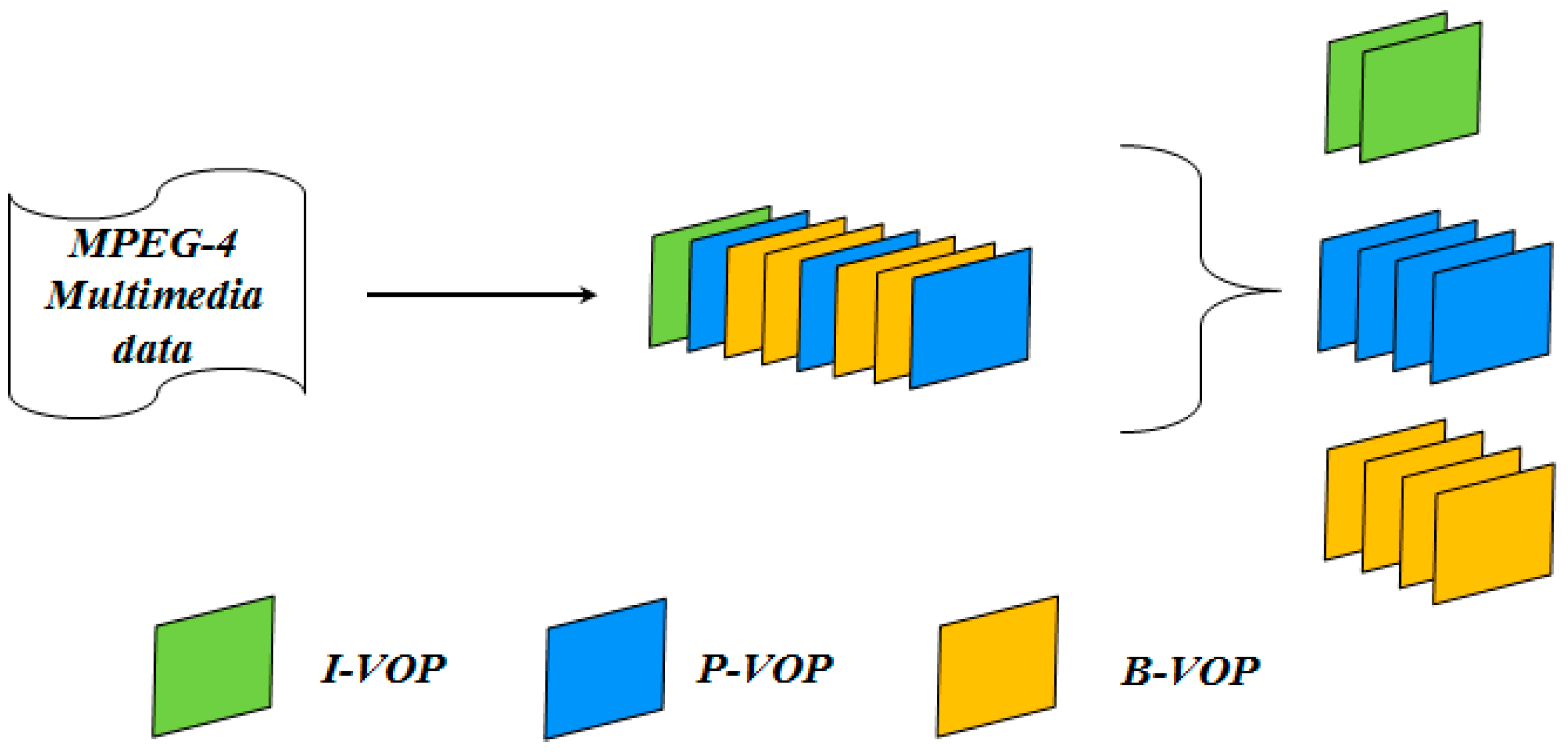
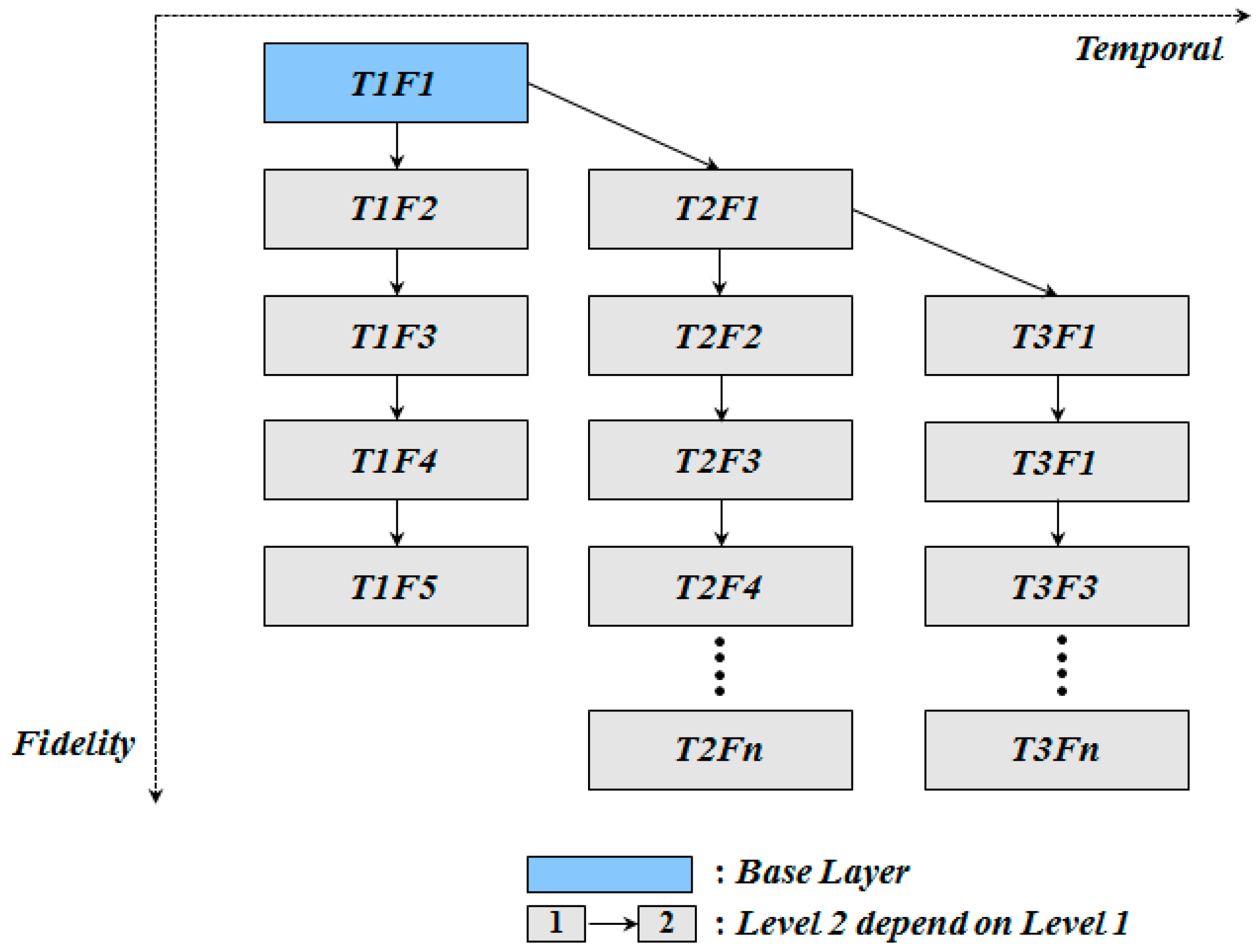
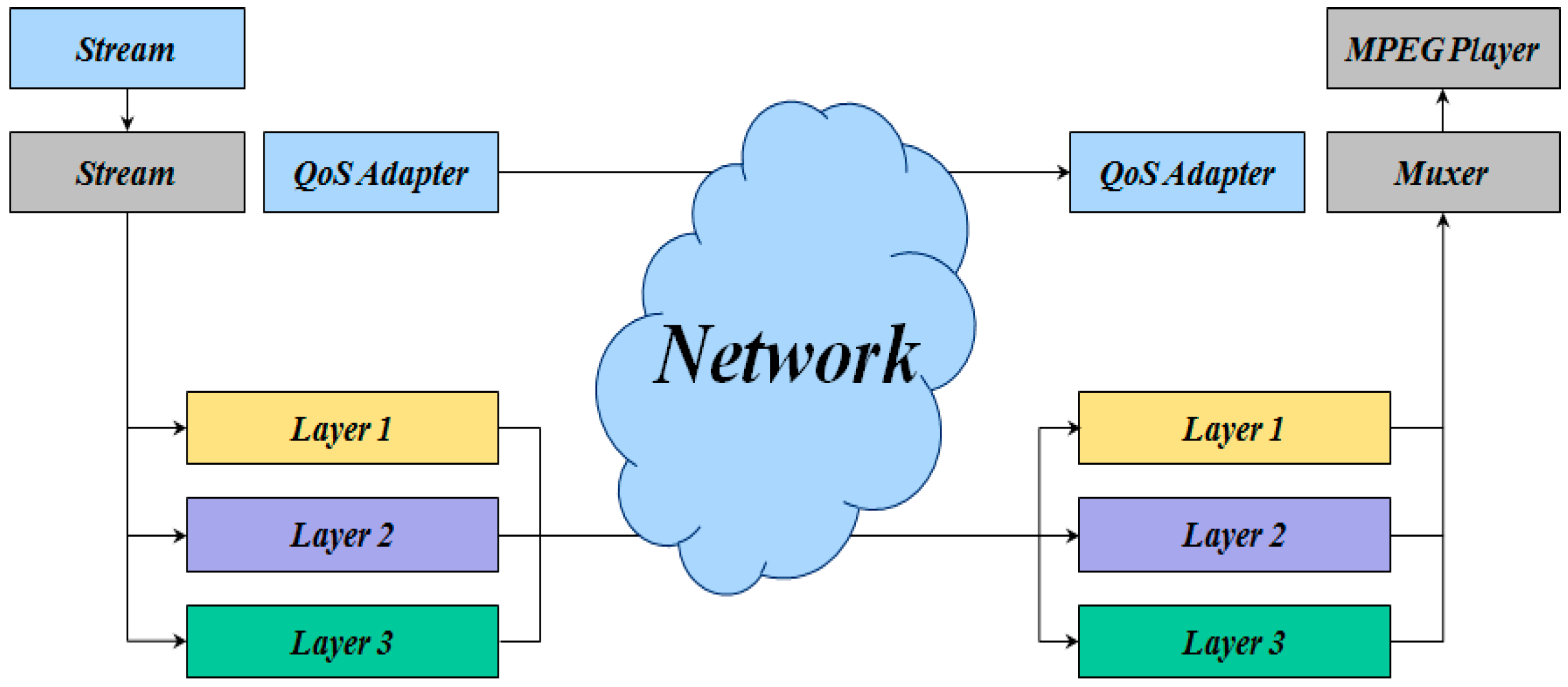



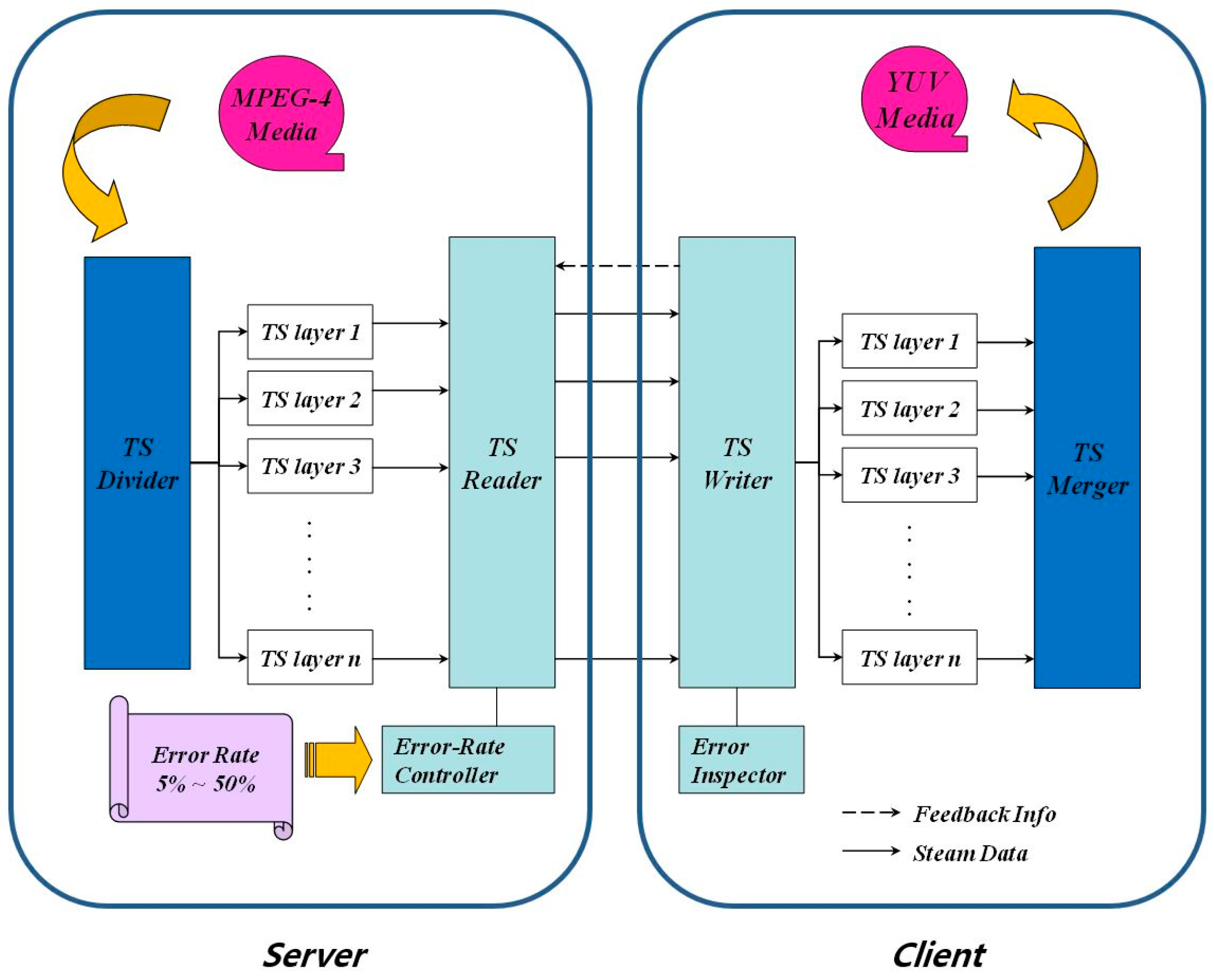
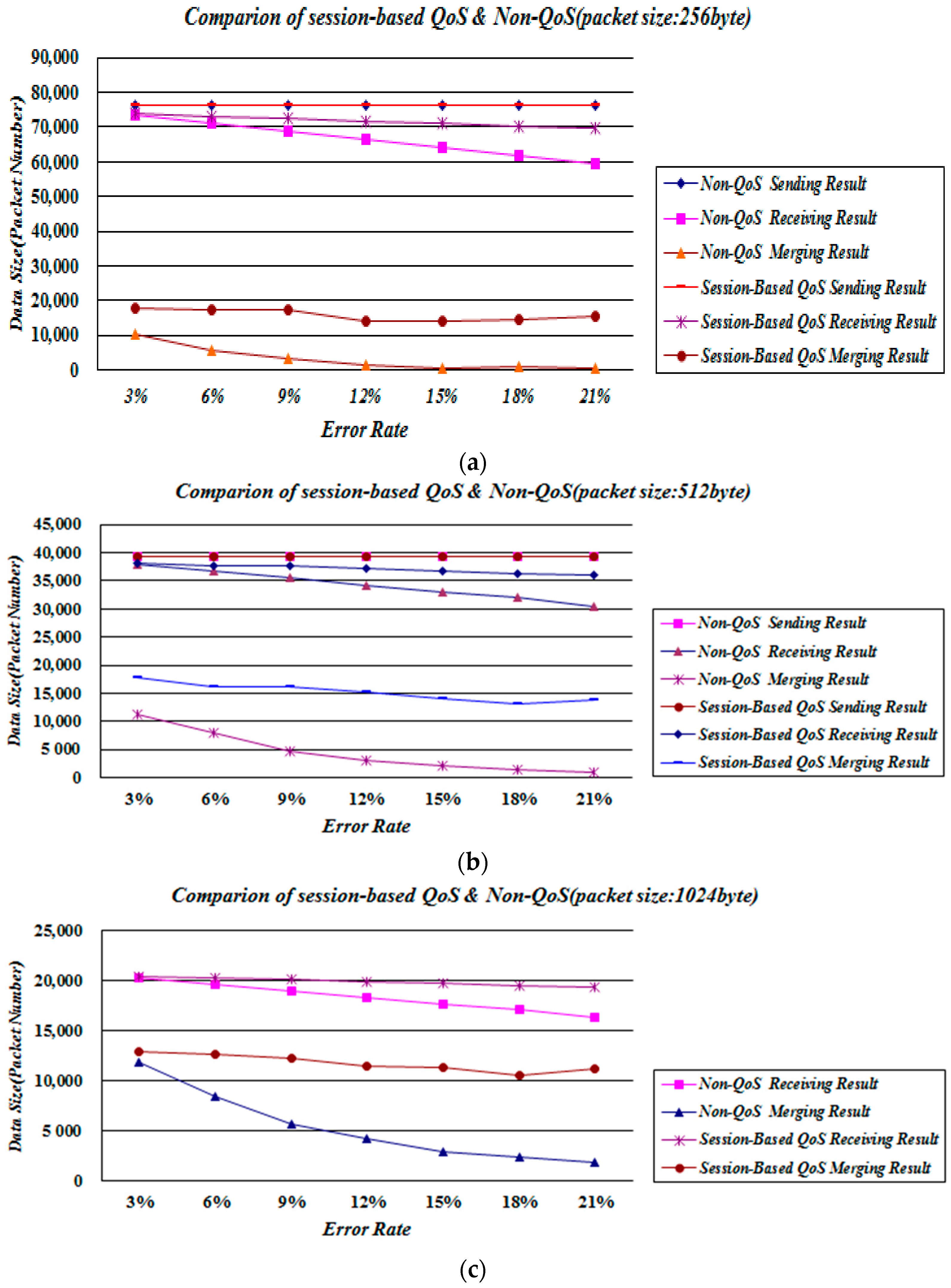
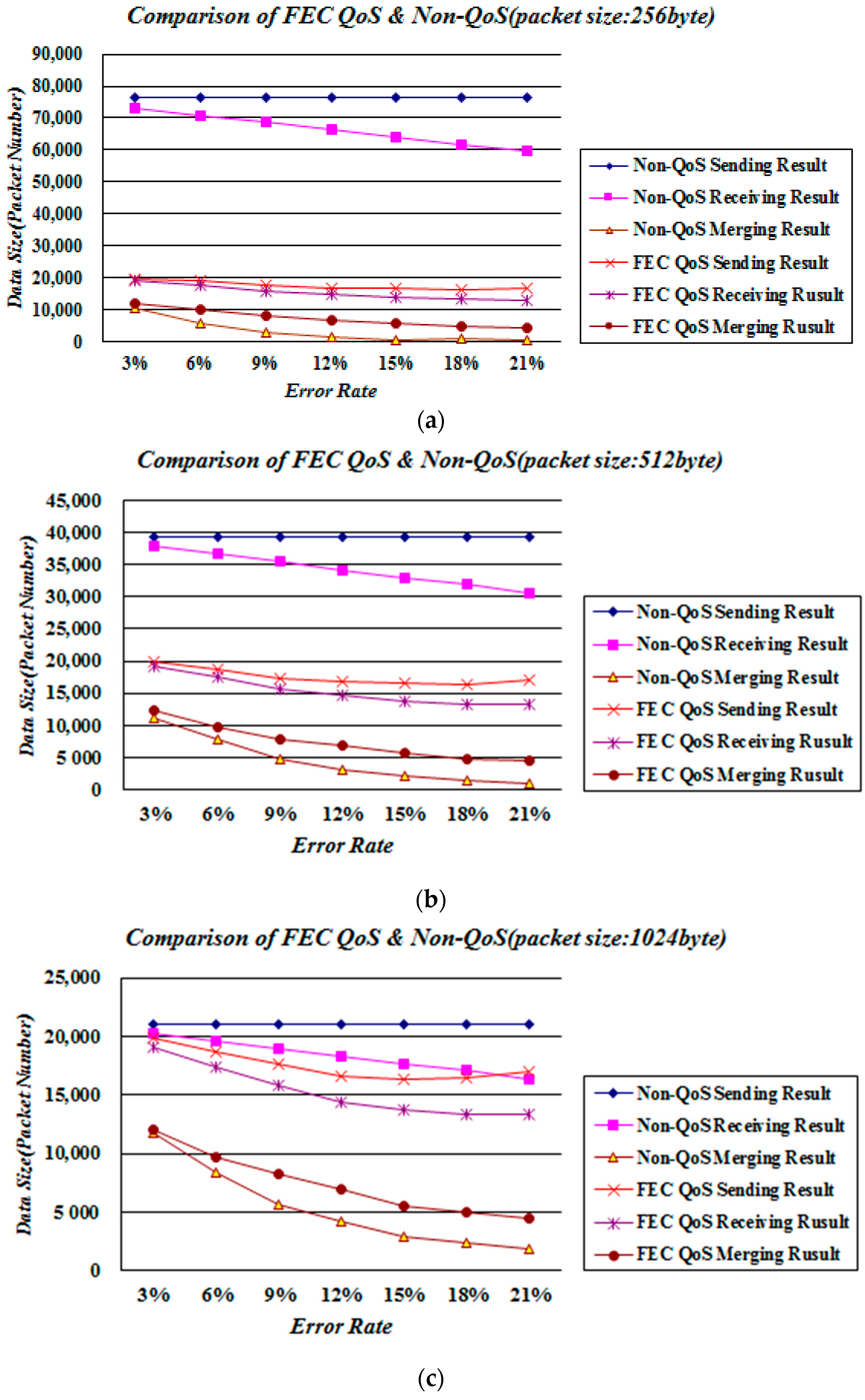
© 2017 by the authors. Licensee MDPI, Basel, Switzerland. This article is an open access article distributed under the terms and conditions of the Creative Commons Attribution (CC BY) license ( http://creativecommons.org/licenses/by/4.0/).
Share and Cite
Kim, S.-H.; Yoo, K.-J.; Won, Y. Transmission Algorithm with QoS Considerations for a Sustainable MPEG Streaming Service. Sustainability 2017, 9, 367. https://doi.org/10.3390/su9030367
Kim S-H, Yoo K-J, Won Y. Transmission Algorithm with QoS Considerations for a Sustainable MPEG Streaming Service. Sustainability. 2017; 9(3):367. https://doi.org/10.3390/su9030367
Chicago/Turabian StyleKim, Sang-Hyong, Kwan-Jong Yoo, and Yoojae Won. 2017. "Transmission Algorithm with QoS Considerations for a Sustainable MPEG Streaming Service" Sustainability 9, no. 3: 367. https://doi.org/10.3390/su9030367
APA StyleKim, S.-H., Yoo, K.-J., & Won, Y. (2017). Transmission Algorithm with QoS Considerations for a Sustainable MPEG Streaming Service. Sustainability, 9(3), 367. https://doi.org/10.3390/su9030367





